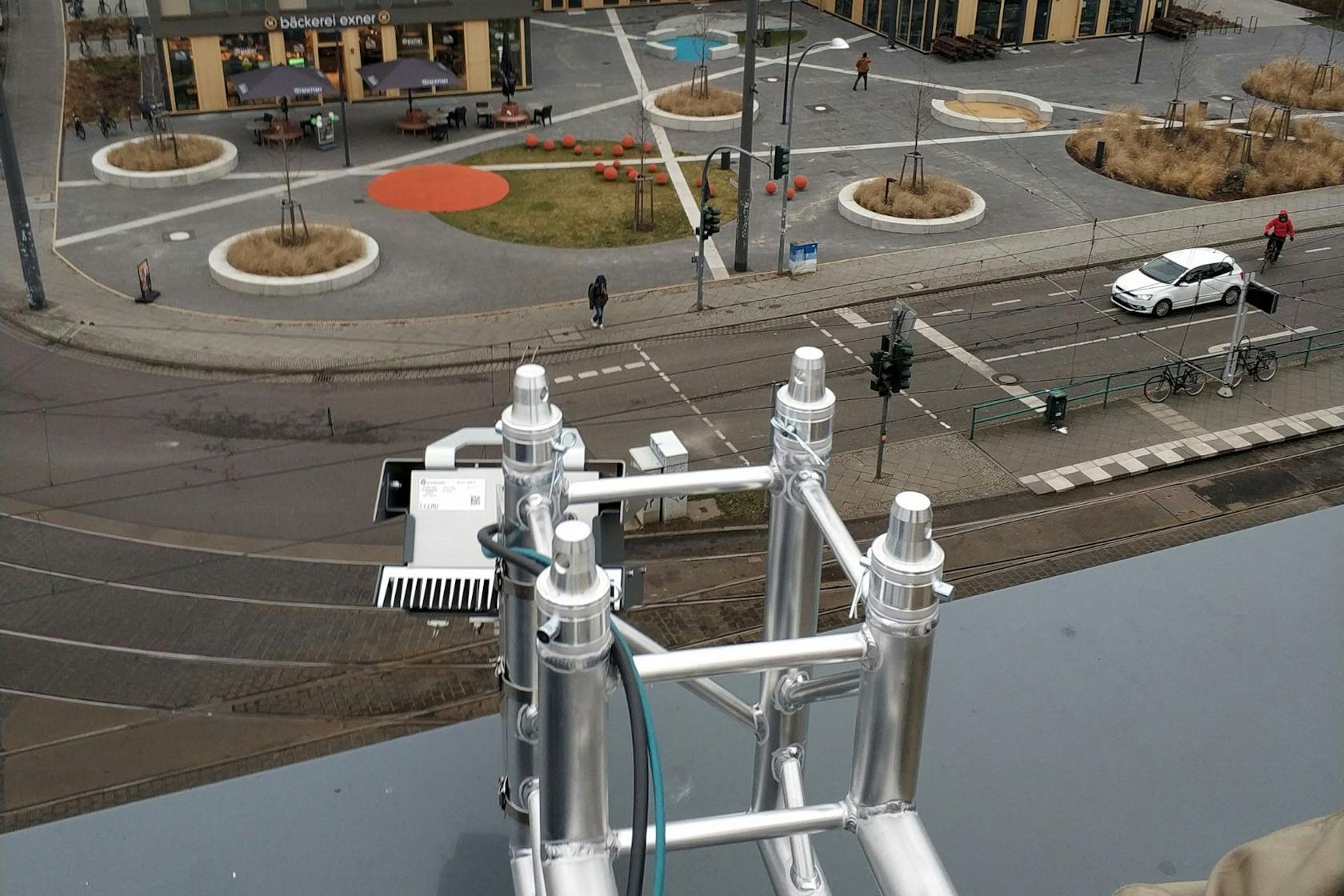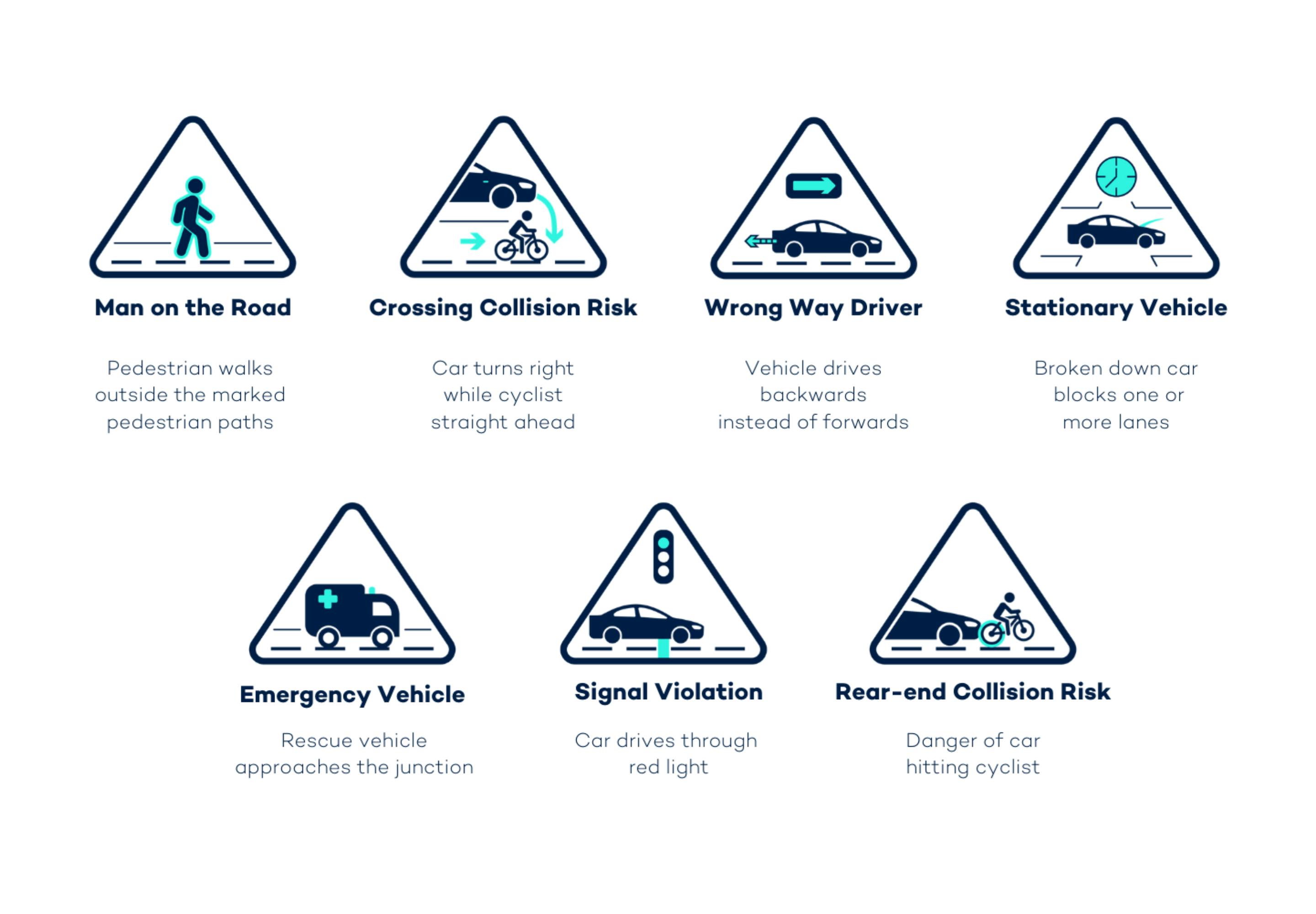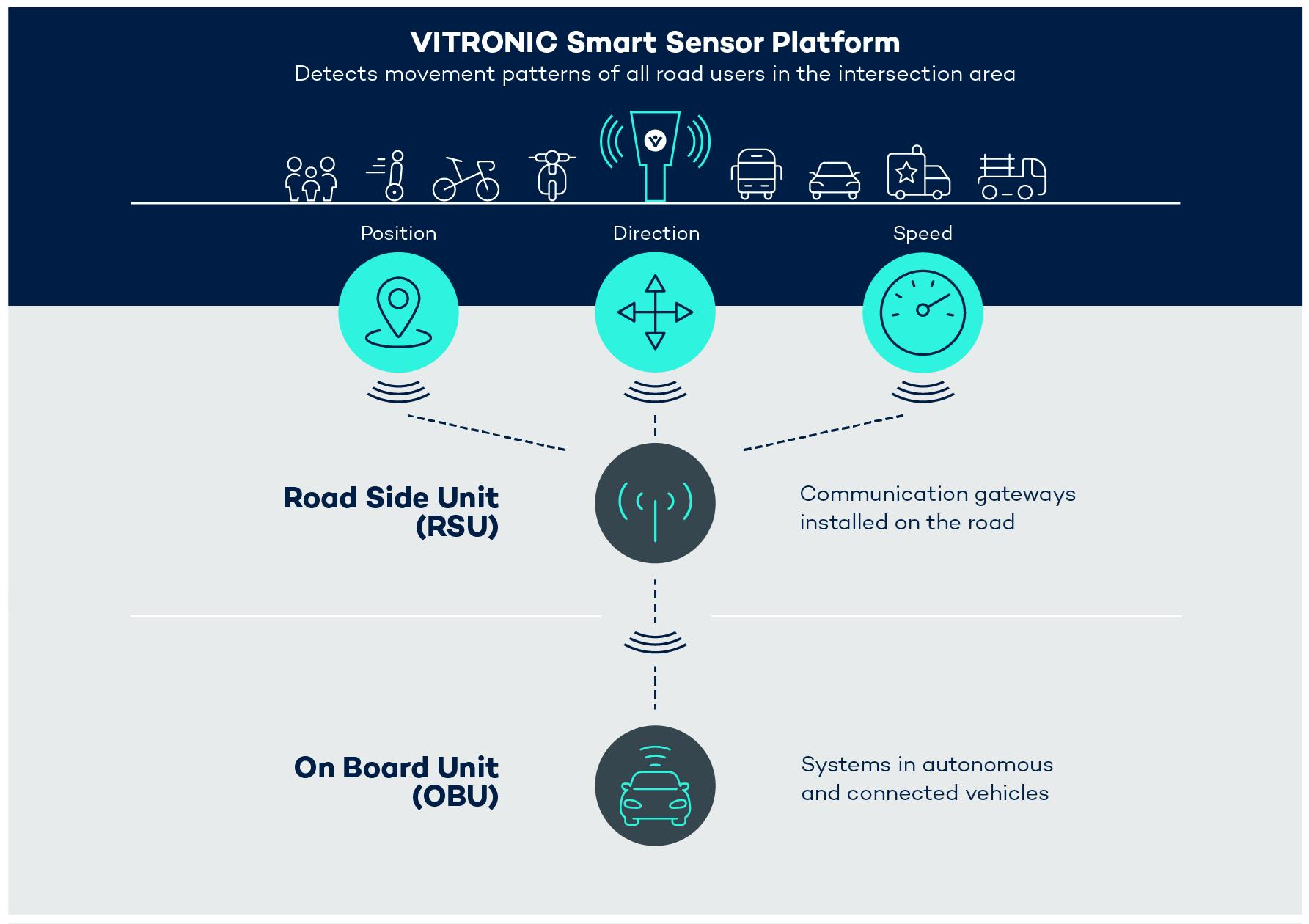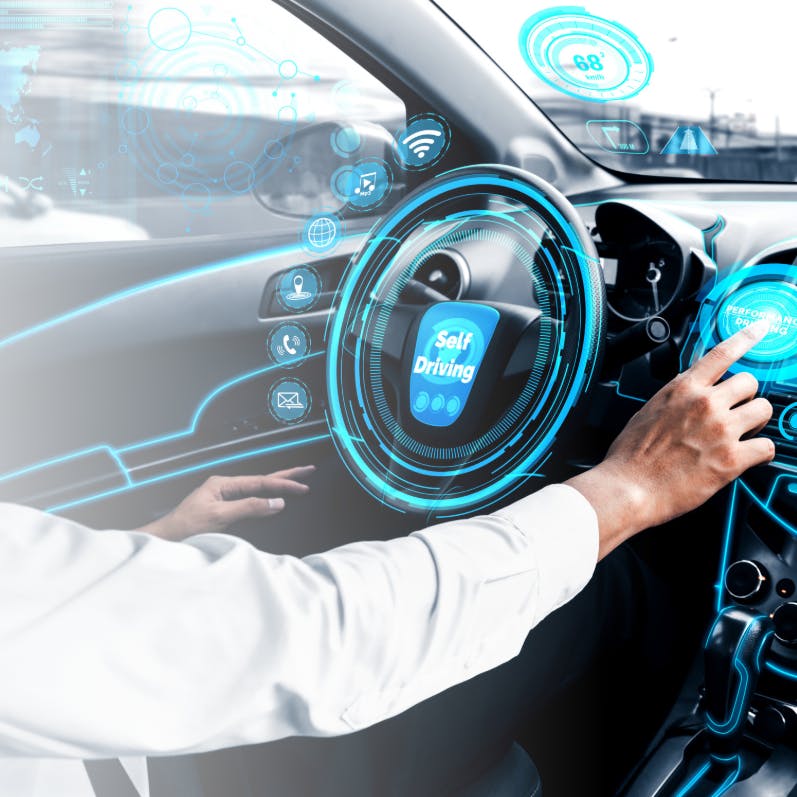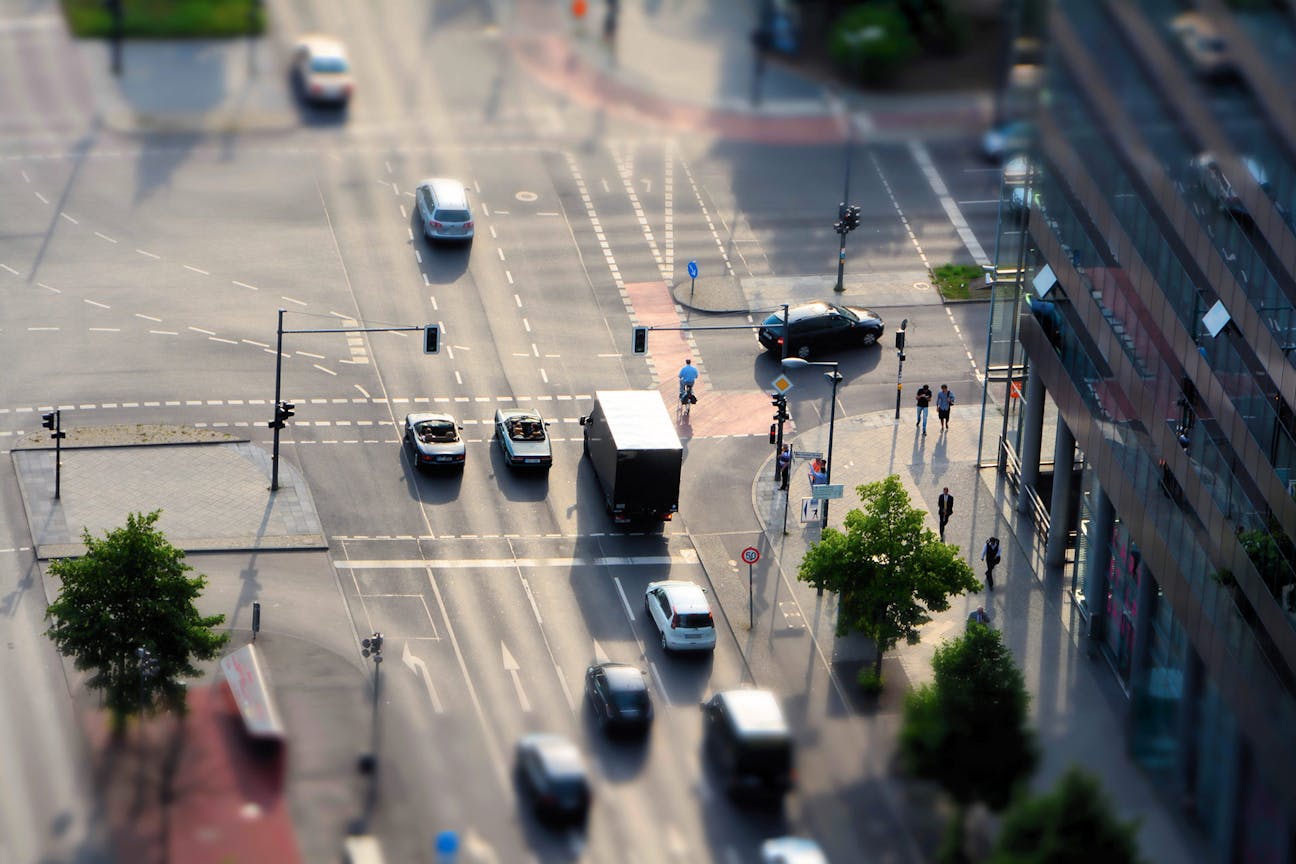

Case StudyIntelligent road infrastructure to support automated and connected vehicles
In the heart of Potsdam (Germany), VITRONIC demonstrates its pioneering role for Intelligent Transportation Systems (ITS) in connection with automated and connected vehicles. The company develops systems that improve road safety.
Achievements:
- Analysis of the current traffic situation
- Provision of mobility data and collision warnings
- Identification of dangerous situations in the intersection area
- Provision of mobility data for the optimization of traffic light controls
The initial situation:
Looking for a solution to improve safety for VRUs
Cities are facing the challenge of driving forward the mobility transition, with road safety and sustainability being key factors. The rapid development of automated and connected driving provides opportunities to make traffic more efficient and safer, but also harbors risks. Automated vehicles can increase safety for vulnerable road users (VRUs) in urban areas, as around 90% of all accidents are caused by human error. On the other hand, it should not be overlooked that despite the major technical advances in the field of automated driving, the technology still faces challenges in flowing traffic. However, the safety of pedestrians and cyclists, especially in critical areas such as complex junctions, must be ensured at all costs.
As advancements in this field continue to progress rapidly, cities will sooner or later have to address the issues of automated and connected driving. To ensure that future mixed traffic consisting of automated and non-automated road users is safe and sustainable, intelligent roadside infrastructure solutions are needed.
- About 75%of fatal road accidents take place in built-up areas. Source: Destatis (2024)
It is therefore crucial to establish innovative technology solutions as an investment in the infrastructure of tomorrow in order to be prepared for the mobility of the future.
VITRONICs real-world laboratory:
In terms of inner-city traffic areas, intersections are a particular accident hotspot where collisions between vehicles and VRUs frequently occur. Studies have shown that there are an average of seven different intersection scenarios in which the paths of road users cross and potentially dangerous situations can arise.
This is why VITRONIC, together with a leading German research institute for traffic technology and various vehicle manufacturers, has established a real-world laboratory at an intersection in Potsdam since 2021. The research project followed the key question "How can automated and connected vehicles be optimally supported by intelligent infrastructures in complex traffic scenarios?".
By combining technological innovation and practical knowledge, the aim was to gain important insights into the impact of digital infrastructure in conjunction with autonomous vehicle technology and local traffic situations.
Our intelligent detection systems allow us to realize the vision of a connected and safe mobility of the future while supporting the overarching goal of Vision Zero."
Capturing a dynamic environment:
A real-world laboratory called the "Local Traffic Safety Analyzer (LTSA)" has been set up in Potsdam, whose research is based on the optical detection of road users. VITRONIC's Smart Sensor Platform (SSP) enables this and moreover allows mobility data from cyclists, motorists and pedestrians in intersections to be captured in compliance with data protection regulations. In addition, the LTSA has Road Side Units (RSU), which serve as a communication interface for automated and connected vehicles to provide anonymized mobility data of road users.
This data helps the vehicles to plan safe and reliable driving maneuvers in complex traffic situations by providing additional information about otherwise invisible areas.
In order to better understand the dynamics at the intersection, the system was trained to recognize and differentiate between the following dangerous situations.
Within the scenarios presented, VITRONIC used analytical methods to identify potential collisions between road users at an early stage and send these risk alerts to the vehicles via the communication channels.
The technical implementation:
The VITRONIC Smart Sensor platform uses image-based object recognition to detect road users and their movement patterns in the intersection area. It provides detailed information about the position, moving direction and speed of each individual road user. The collected data is used to analyze the threat potential (according to the scenarios) on the one hand and to generate risk alerts on the other. Both the raw data, i.e. the mobility data for each object, and the collision warnings are output in a standardized message format that is understandable to the automated and connected vehicles. This standardization is of great importance as it enables consistent communication and interpretation of the data regardless of vehicle type and manufacturer.
The standardized messages are sent to the on-board unit of the automated and connected vehicles in real time via a communication network (ITS-G5) using the roadside units (RSU). This way, the vehicles can acquire an accurate picture of their surroundings and react accordingly in potentially dangerous situations. The system offers augmented reality, as it also recognizes hidden road users or obstacles that the vehicle sensors cannot detect at first glance. In addition to increased safety for road users, this contributes to a more efficient traffic flow. Furthermore, the collected data can also be used as a basis for safety-oriented control and optimization of traffic light circuits.
The result:
Important insights for the support of automated and connected vehicles
The results of the real-world laboratory underline that the use of advanced technologies such as the VITRONIC Smart Sensor Platform in combination with intelligent algorithms is an effective way to promote safe and sustainable mobility in urban areas. In particular, the analysis of dangerous scenarios showed that the system significantly reduces the risk of collisions, especially in turning scenarios, where turning right poses a major risk of accidents between cars and cyclists. The system's fast and precise detection also helps to minimize potential collisions in scenarios with people on the road.
The proven approach therefore offers valuable application possibilities, for example in the implementation of autonomous shuttle services or autonomous streetcars in local public transport to ensure additional safety at critical points. In addition, the VITRONIC system can be flexibly integrated into new or existing infrastructures as well as adapted and expanded for other applications, such as traffic control in low emission zones.
The safe and reliable operation of automated and connected vehicles requires an intelligent and digital road infrastructure. The project in Potsdam shows that our intelligent technologies are equipped for the future of mobility."
